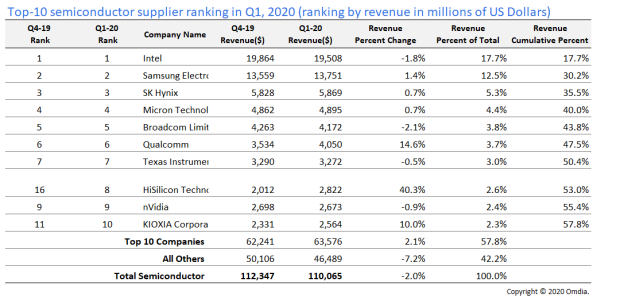ON Semiconductor (Nasdaq: ON), driving energy efficient innovations, has introduced a new Bluetooth® Low Energy mesh networking solution based on its ultra-low-power RSL10 System-in-Package (RSL10 SIP).
Semiconductors
EV Group Earns Eighth Consecutive Triple Crown Win at VLSIResearch 2020 Customer Satisfaction Survey
EV Group today announced that it has once again been voted by customers as one of the 10 BEST Focused Suppliers of Chip Making Equipment and one of the 2020 THE BEST Suppliers of Fab Equipment in the 2020 VLSIresearch Customer Satisfaction Survey
2020 IEEE International Electron Devices Meeting To Be Held Virtually
The organizers of the upcoming 66th annual IEEE International Electron Devices Meeting (IEDM), the world’s premier forum for technological breakthroughs in semiconductor and electron device technology, have decided to hold the conference virtually this year given the ongoing uncertainties posed by the prevailing COVID-19 pandemic.
Tuya Joins Zigbee Alliance Board of Directors
The Zigbee Alliance, an organization of hundreds of companies creating, maintaining, and delivering open, global standards for the Internet of Things (IoT), today announced that global-leading IoT platform provider Tuya has joined its Board of Directors.
New Design for ‘Optical Ruler’ Could Revolutionize Clocks, Telescopes, Telecommunications
Just as a meter stick with hundreds of tick marks can be used to measure distances with great precision, a device known as a laser frequency comb, with its hundreds of evenly spaced, sharply defined frequencies, can be used to measure the colors of light waves with great precision.
EU Team Demonstrates Full Data-Transfer Silicon Photonics Module Delivering 100 Gb/s and Develops Building Blocks for Tb/s
CEA-Leti today announced the demonstration of a fully packaged CWDM optical transceiver module with data transfer of 100 Gb/s per fiber with a low-power-consumption electronic chip co-integrated on the photonic chip. This silicon-photonics-based transceiver multiplexes two wavelengths at 50 Gb/s and is designed to meet the ever-increasing data-communication demands and energy use of data centers and supercomputers.

Top-10 Semiconductor Suppliers Defy Weak Market Conditions in Q1
Defying a decline in market revenue, the world’s top-10 semiconductor suppliers managed to generate revenue growth of 2.1 percent in the first quarter, as the companies benefitted from a COVID-19-driven increase in PC and server sales.
GLOBALFOUNDRIES to Acquire Land in Malta, NY
GLOBALFOUNDRIES today announced it has secured a purchase option agreement for approximately 66 acres of undeveloped land adjacent to its most advanced manufacturing facility, Fab 8, in Malta, N.Y., near the Luther Forest Technology Campus (LFTC).
NY CREATES Announces New AIM Leadership
NY CREATES (New York Center for Research, Economic Advancement, Technology, Engineering and Science) announce the appointment of Dr. Michael J. Cumbo as Chief Executive Officer (CEO) for the American Institute for Manufacturing Integrated Photonics (AIM Photonics), a program of NY CREATES, effective July 6, 2020.
Semtech Announces Production of New Tri-Edge, a PAM4 CDR Platform for 200G and 400G Data Center Applications
Semtech Corporation (Nasdaq: SMTC), a leading supplier of high performance analog and mixed-signal semiconductors and advanced algorithms, today announced production availability of GN2558 and GN2559, Semtech’s Tri-Edge CDR SR solutions to enable next-generation data center multi-mode interconnectivity.